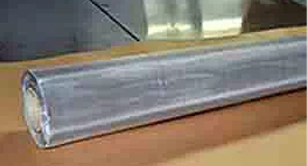Ліст . 28, 2024 00:56 Back to list
Durable Stainless Steel Wire Mesh for Various Applications and Uses
Stainless Steel Wire Netting An Overview
Stainless steel wire netting has become an essential material across numerous industries due to its unique properties and versatility. Comprised of stainless steel, which is known for its resistance to corrosion, staining, and rusting, this type of netting offers a reliable solution for a wide array of applications, from construction to agriculture, landscaping, and beyond.
Properties and Composition
Stainless steel wire netting typically comprises various grades of stainless steel, such as 304 or 316. These grades are selected based on the specific resistance to environmental factors required for different applications. Grade 304 is commonly used due to its balance of strength and corrosion resistance, making it ideal for use in mild environments. Grade 316, containing molybdenum, is better suited for harsher environments, including marine applications, due to its enhanced resistance to chlorides.
The wire netting is produced through an intricate weaving process that produces a mesh with uniform openings. The size of the openings can vary, allowing customization based on the specific needs of the project. The thickness of the wire also contributes to the strength and durability of the netting, with heavier wires providing more robustness for demanding applications.
Applications of Stainless Steel Wire Netting
1. Construction and Building In construction, stainless steel wire netting is often utilized for safety barriers, reinforcement of concrete structures, and as a support for plaster or render. Its strength and durability make it an ideal choice for ensuring structural integrity and safety.
2. Agriculture Farmers and agricultural producers use stainless steel wire netting for fencing, animal enclosures, and crop protection. Its corrosion resistance ensures longevity even in harsh weather conditions, helping to protect livestock and crops from predators and pests.
stainless steel wire netting

3. Landscaping In landscaping, stainless steel wire netting is employed for erosion control, decorative elements, and retaining walls. Its aesthetic appeal combined with its functional qualities makes it a popular choice among landscape architects.
4. Industrial Applications Many industries use stainless steel wire netting for various applications, including filtration, screening, and separation processes. Its ability to withstand high temperatures and corrosive substances makes it invaluable in chemical processing plants, food production facilities, and waste management operations.
5. Security Stainless steel wire netting is also utilized as a security measure. It can be used to create fences, barriers, and grilles that provide a formidable deterrent against intrusion while maintaining visibility and airflow.
Advantages of Stainless Steel Wire Netting
One of the primary advantages of stainless steel wire netting is its durability. Unlike other materials such as plastic or mild steel, stainless steel does not degrade or corrode easily, providing a long-lasting solution for various applications. Its resistance to extreme temperatures and heavy loads also adds to its reliability.
Moreover, stainless steel wire netting is environmentally friendly. It is recyclable, reducing overall waste and contributing to sustainable practices. The aesthetic qualities of stainless steel, such as its shiny finish and ability to blend with various settings, further enhance its attractiveness for a wide range of uses.
Conclusion
Stainless steel wire netting is a highly versatile and durable material that serves multiple industries. Its unique properties, including corrosion resistance, strength, and recyclability, make it an optimal choice for applications ranging from construction and agriculture to security and industrial processes. As industries continue to innovate and seek materials that can withstand the test of time and environmental challenges, stainless steel wire netting is poised to remain at the forefront of these developments. Whether for practical use or aesthetic appeal, its role in modern applications cannot be overstated, showcasing the importance and utility of this remarkable material.
share
-
Premium Stainless Steel Netting Mesh Discount & ODM Stainless Steel Wire Mesh Solutions
NewsJun.24,2025
-
High-Quality Screen Stone for Modern Stone Screen Walls Elegant Facade Solutions
NewsJun.10,2025
-
High Quality Wire Filter – Cheap Stainless Steel Filter Wire Mesh Cloth & Wire Mesh Filter Solutions
NewsJun.10,2025
-
5 Micron Water Filter Cartridge - Premium Sediment Filtration, Universal Fit
NewsJun.10,2025
-
High Quality CE-Certified Gabion Boxes with OEM Options
NewsJun.10,2025
-
20x20x2 Air Filter High-Efficiency Dust Filtration for Clean Air
NewsJun.10,2025

